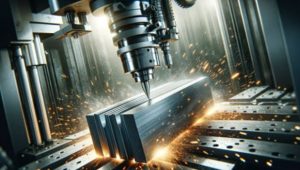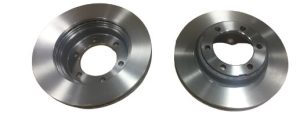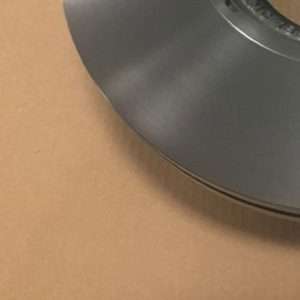MATERIALS
Cast Iron Machining
It offers three to five time’s higher compression strength than steel. Low notch sensitivity, Good Resistance to deformation, excellent anti-vibration, and consistent mechanical properties

Cast Iron At a Glance
| Process compatibility | Applications | Tolerances | Wall Thickness | Max Part Size | Strengths | Lead Time | Price |
| CNC Mill CNC Lathe | Engine cylinder blocks, flywheels, gearbox cases, agricultural tools, hardware, and various structures with excellent repeatability and dimensional stability. | Not lower than ±0.125mm (±0.005″) based on the drawing ( ISO 2768) | Minimum 0.75 mm (~0.03”); It might vary based on size of the parts. | 200 x 80 x 100 cm | High compression strength than steel. Low notch sensitivity, Good Resistance to deformation, excellent anti-vibration. | Minimum 3 days. Not more than 10 days; for all compex parts. | $$$ |
Introduction to Cast Iron
Cast iron contains 2–4% carbon and other alloys. It has good hardness and toughness to absorb a large amount of energy. Since cast iron is almost elastic up to ultimate tensile strength, it is easy to machine and maintains its strength for longer.
Due to the high tensile and fatigue strength, it is suitable for Engine cylinder blocks, flywheels, gearbox cases, agricultural tools, hardware, and various structures.
Precision and Expertise in Cast Iron CNC Machining

Our Expertise in Cast Iron CNC Machining Services can handle diverse project requirements, from small-scale custom jobs to large industrial orders. The core of our service lies in understanding the unique properties of cast iron and applying Precision Cast Iron CNC Machining Techniques to each task. The expertise of our team, coupled with advanced CNC machinery, allows us to execute projects with remarkable accuracy and efficiency.
Additionally, Quality Assurance in Cast Iron CNC Machining is not just a protocol but a commitment to excellence. Regular inspections, rigorous testing, and adherence to industry standards are integral parts of our quality assurance process.
Key Highlights of Cast Iron CNC Machining at Prolean
- Precision Techniques: We use advanced CNC machines with AI-integrated equipment and precision engineering for intricate cast iron parts.
- Expert Solutions: Tailored machining strategies to address specific requirements of cast iron components.
- Specialized Skills: A team with in-depth knowledge and experience in machining cast iron.
- Advanced Techniques: Incorporating the latest technological advancements for superior precision.
- Quality Assurance: Strict quality control measures to ensure the highest standards in every machined part.
Custom Solutions and Services for Cast Iron Machining

Additionally, the emergence of Online Cast Iron CNC Machining Service Providers has revolutionized access to these custom services, making them more efficient and widely available.
1. Custom Cast Iron Parts Manufacturing
Our Custom Cast Iron Parts Manufacturing offers a tailored approach to producing components that meet specific design and functional requirements. This manufacturing process can create complex designs with precise tolerances, essential in industries requiring specialized or unique cast iron parts.
2. Cast Iron Prototype Machining Services
Cast Iron Prototype Machining Services are integral in the development and testing phase of new products. Prototyping in cast iron provides a realistic and tangible representation of the final product, allowing for thorough testing and evaluation before full-scale production. This step is crucial for identifying potential issues and making necessary adjustments, thus ensuring the final product’s functionality and quality.
3. Online Cast Iron CNC Machining Service Provider
The rise of Online Cast Iron CNC Machining Service Providers has significantly enhanced the accessibility and efficiency of obtaining custom machined parts. For example, our online platforms offer a streamlined process for ordering custom parts, from instant quotes to easy selection of specifications. The advantages include faster turnaround times, competitive pricing, and access to services from anywhere.
Efficiency and Cost-Effectiveness in Cast Iron CNC Machining at Prolean
At Prolean, the focus on Efficiency and Cost-Effectiveness in Cast Iron CNC Machining is paramount. We ensure every project is managed with the utmost precision and attention to financial practicality. Our Cost-effective Cast Iron CNC Machining Service offers the best value, balancing high-quality outputs with competitive pricing. Furthermore, the Fast Cast Iron CNC Machining Service significantly shortens production times, making it a reliable choice for clients under tight deadlines.
The transparent approach in Cast Iron CNC Machining Cost and Price gives a clear understanding to clients about their investment. This transparency is supported by Instant Quotes for Cast Iron CNC Machining Services and streamlining the estimation process with quick and accurate pricing. As one of The Biggest Cast Iron CNC Machining Quoting Services, Prolean combines its extensive expertise with a robust infrastructure to deliver unparalleled service.
The following are the Key Aspects at Prolean regarding Cost-effective Cast iron CNC machining.
- Fast Machining Services: Rapid turnaround times, maintaining high-quality standards.
- Cost-Effective Machining: Strategic methods to optimize cost without compromising the end product’s quality.
- Machining Cost and Price Clarity: Transparent pricing models that detail every aspect of the project cost.
- Instant Quoting Service: Swift and precise cost estimations, enhancing customer satisfaction.
- Leading Quoting Service: Prolean’s vast experience and resources offer competitive and comprehensive quotes.
Our dedication to Efficiency and Cost-Effectiveness in Cast Iron CNC Machining exemplifies the commitment to quality and client satisfaction and showcases its role as a leader in the industry.
A Blend of Expertise, Quality, and Affordability for Cast iron CNC Machining
Prolean stands at the forefront of the industry, blending Expertise in PTFE CNC Machining Services with an unwavering commitment to quality and affordability. This combination sets Prolean apart as a leader in PTFE machining. Our proficiency has a foundation of extensive experience and specialized knowledge to handle each PTFE project with the highest level of expertise.
At Prolean, our Top PTFE CNC Machining Expertise is reflected in every project. We showcase advanced skills and in-depth knowledge in PTFE machining. This expertise is crucial in maintaining our position as a leading provider in the CNC machining industry.
Our approach to PTFE CNC Machining Solutions at Prolean is holistic, focusing on delivering efficient and effective services. We understand that each client’s needs are unique, and we tailor our machining processes to meet these specific requirements.
Get Your Parts Made Today
All uploads are secure and confidential.


